A Snapping Turtle, Curation Behavior
Amazingly beautiful flora and fauna, and more...
Please click on photos to enlarge.
I think turtle migration must be about over, as I haven’t seen any on the road for a week or so. This was a big snapping turtle on the road by the entrance of Cedar Bluffs. I took a couple of photos and went to my truck to get a shovel to help me move him (males are larger than females, and this was a big one) off of the road. By the time I got back with the shovel, he had slid down into the creek.
The snapping turtle is a large turtle with a big head, a long tail, and a nasty disposition. Its most distinctive feature is its long tail with raised Stegosaurus-like plates projecting along the midline. It also has a much reduced diamond-shaped plastron (lower shell) that is connected to the carapace (upper shell) with two narrow bands on the sides. The rear marginal scales of the carapace have points that give the shell a jagged appearance. Adults are dark brown to nearly black on the back, but yellowish cream on the underside. The shells have no spots or other markings. Very young snappers may have a light brown spot on the edge of each marginal scale. The only other turtle that can be confused with the snapping turtle is the alligator snapping turtle, but it is larger and limited to the southeastern tip of Iowa in the Mississippi River. Adults usually have shells eight to 15 inches long and weigh up to 40 pounds.
The snapping turtle is found statewide.
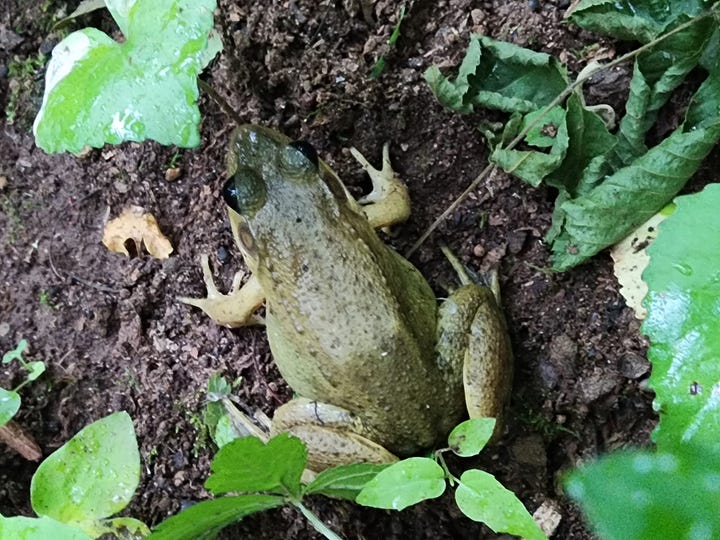

I couldn’t see a wound, but the one on the right has an injured leg, I believe.
Deer have been everywhere.
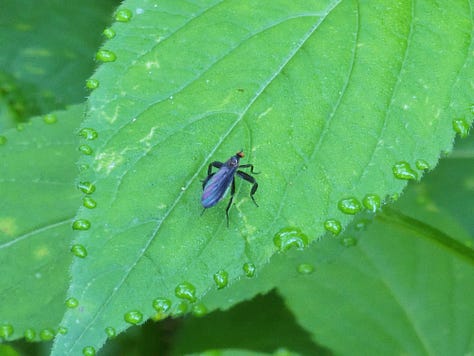
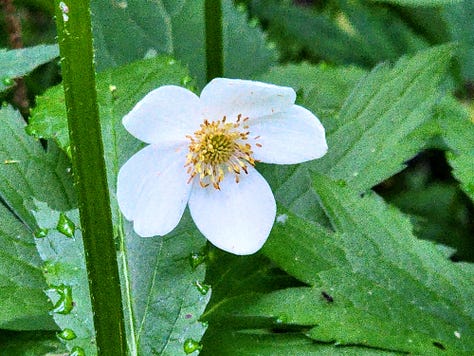
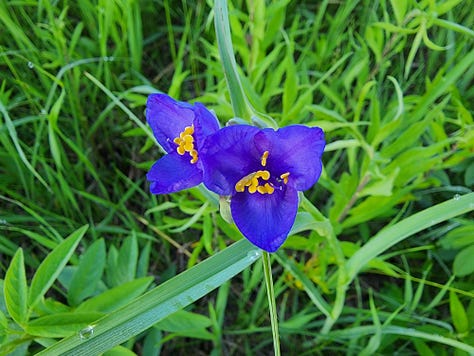
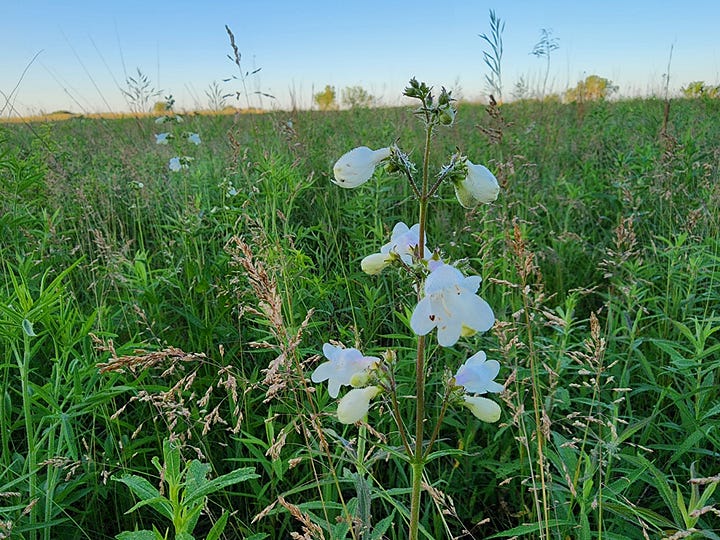
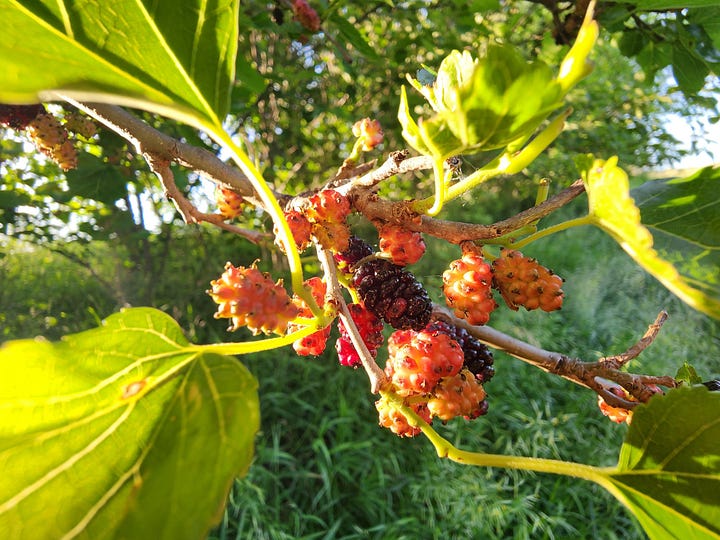
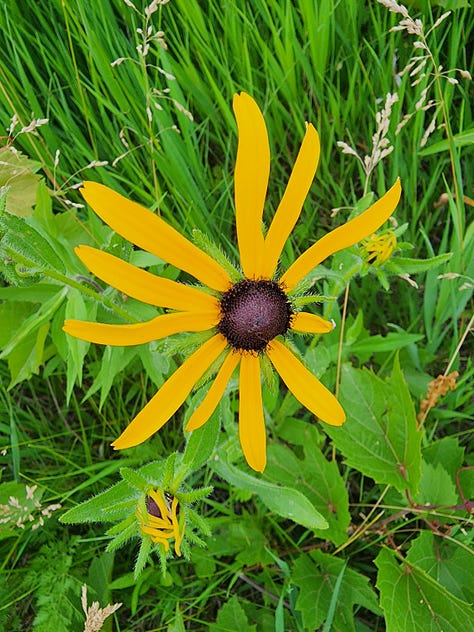
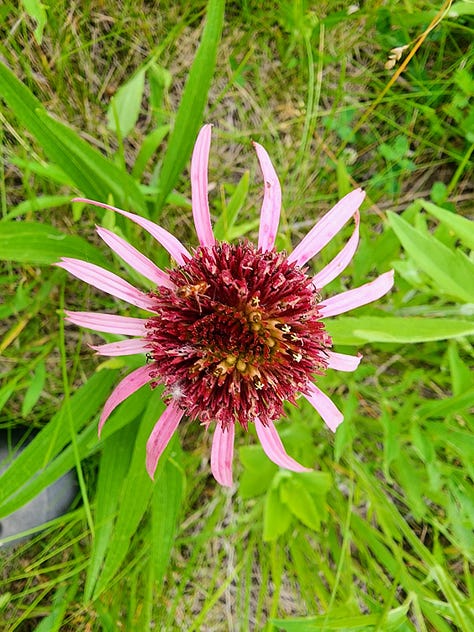
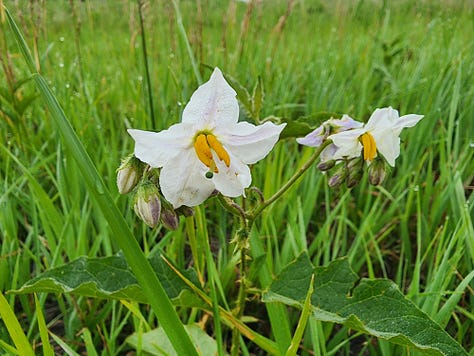
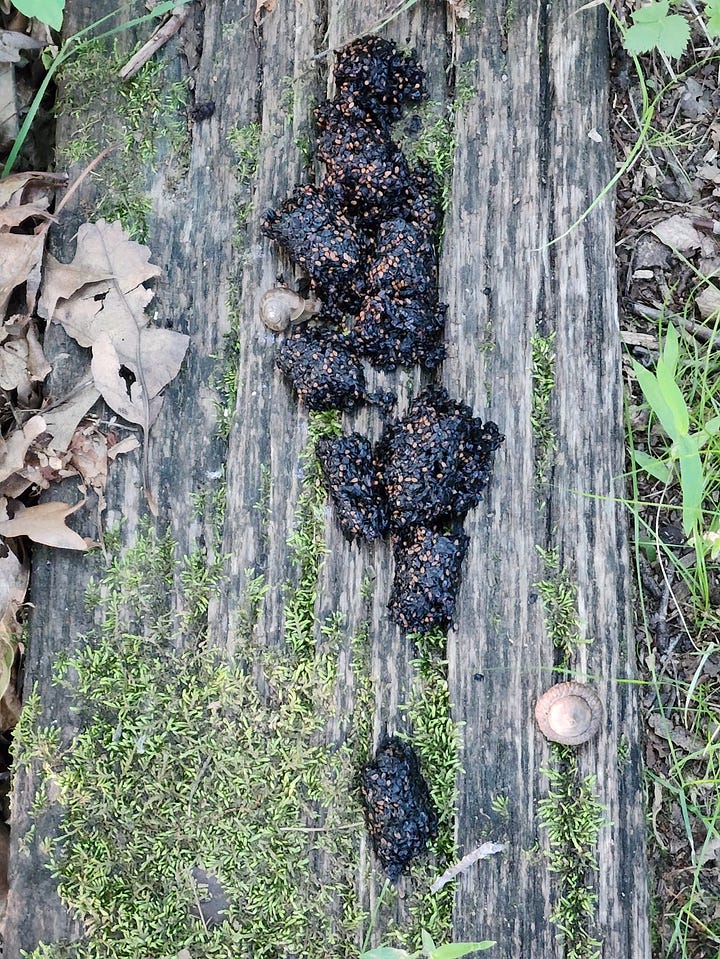
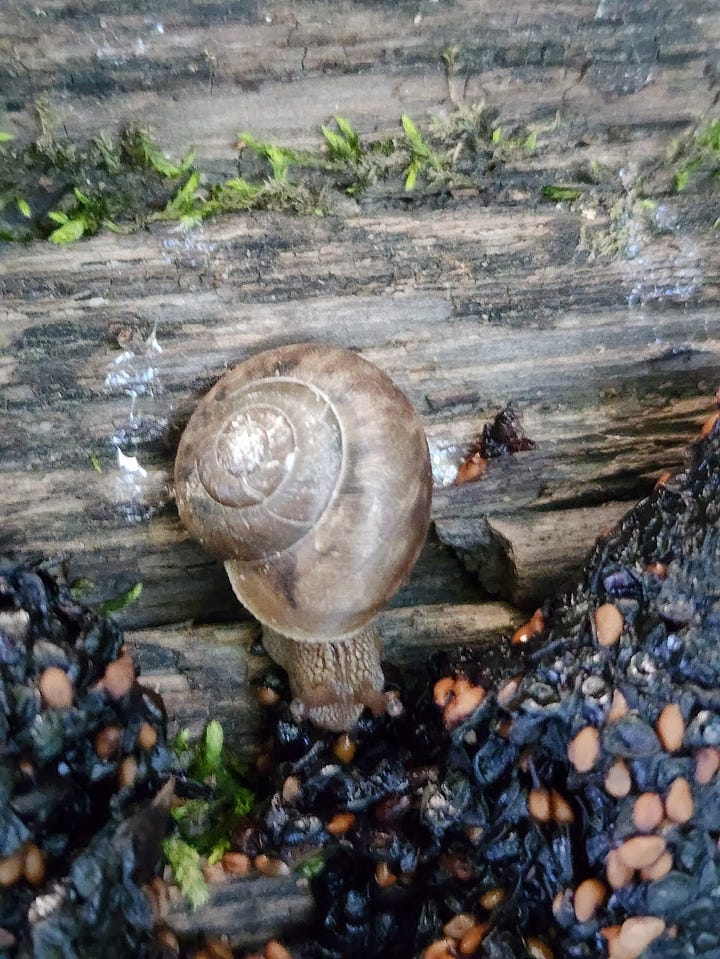
I emailed my friend Pete Eyheralde, Professor of Biology at William Penn asking him whose poop this was. His reply:
Raccoon. One that's been eating white mulberries—an import from China in the 1800's to feed caterpillars in the growing silk trade of Iowa - didn't pan out, but we still have the trees that spread their seeds via birds and mammals all over, largely replacing the native red mulberry trees.
Raccoons often poop on logs to mark territorial boundaries.
So, of course, I had to learn more about importing white mulberries into the United States:
Settlers brought white mulberry trees to Iowa, along with other plants, to make the state feel more like home. The white mulberry (Morus alba) is native to China and was introduced to North America in the 1600s to establish a silk industry. The leaves of the white mulberry are the primary food of silkworms, which were raised by colonists to produce silk for export to England. For example, in 1624, Virginia required every male resident to plant at least four white mulberry trees. In 1733, General Oglethorpe brought 500 white mulberry trees to Georgia for the same purpose. However, the silkworms did not thrive, and by the late 1830s, cold winters and disease had killed off white mulberry plantations in the Northeast and South, ending the planting of the trees.
Today, the white mulberry is considered an invasive weed in Iowa. Its fruit is messy and can stain sidewalks and cars, and it has few ornamental uses.
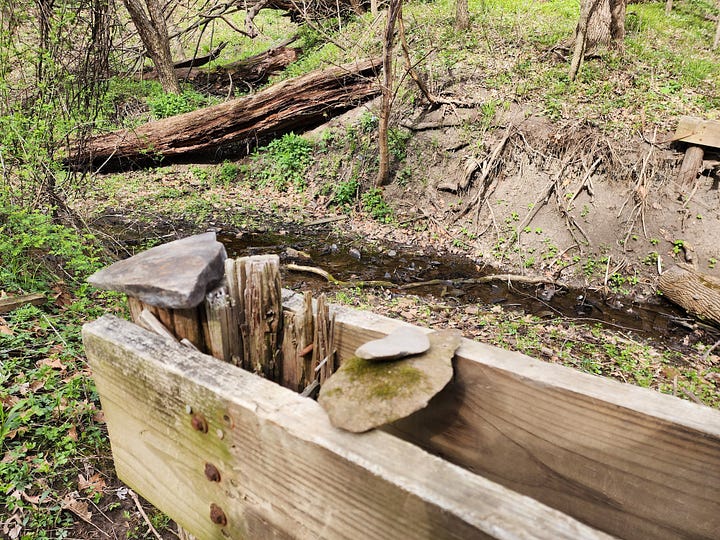
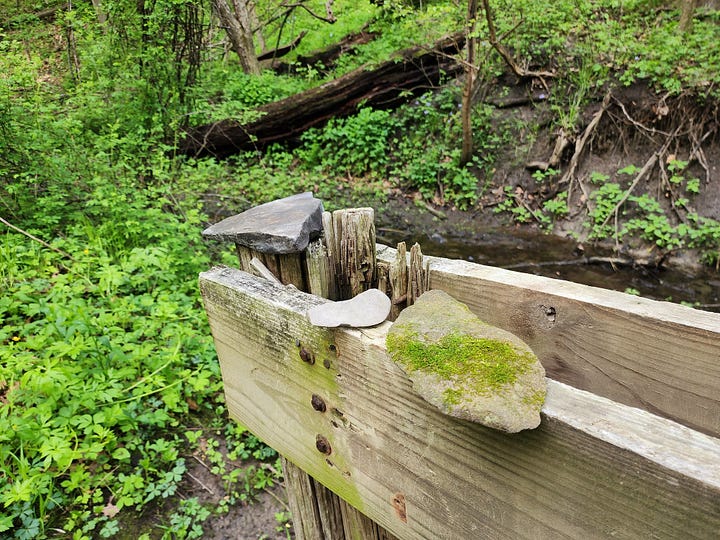

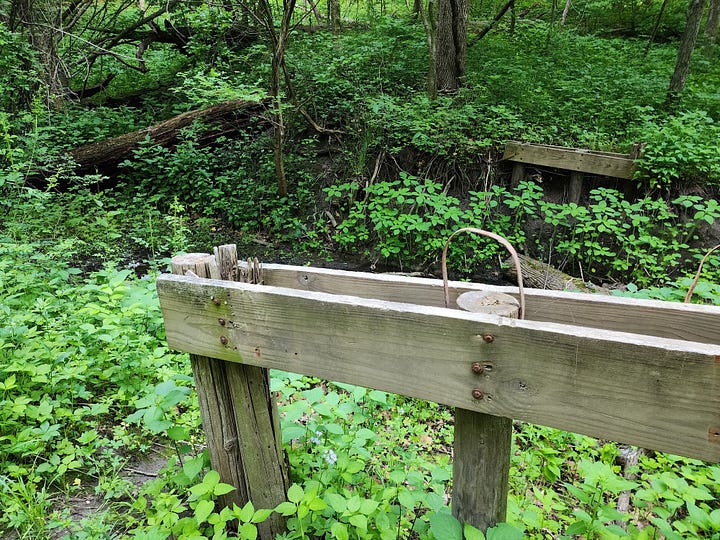
I’ve written before about how people often “curate” items for others to see. The rocks above were taken from the stream bed and placed by someone on the old bridge foundation that a tree took down in a storm a few years ago. Notice how the rocks moved around in the first three photos, taken days apart. First, someone had to select them and place them there. Why these rocks and not others? For what purpose? To admire? For some kind of a game? Kids playing? After about a month of moving around, they were gone. Someone consciously decided to dismantle the work of others.
I think the people who first placed the stones were creating art, however simple, and I would have respectfully left it alone. How about you? What are your thoughts?
If you enjoy Cedar Creek Nature Notes, I also encourage you to subscribe to my friend Larry Stone’s “Listening to the Land.” It’s fantastic. Larry has forgotten more than I will ever know about our outdoor world.
For another glimpse of the wonders of the Iowa outdoors, Diane Porter’s My Gaia is another Substack I enjoy. It’s full of observations on nature and is ripe with wisdom.
And don’t miss Al Batt’s Substack at Al’s Substack. Al Batt of Hartland, Minnesota is a writer, speaker, storyteller, and humorist. Al writes humor and nature columns for many newspapers and does regular radio shows about nature. He writes several popular cartoon strips that are syndicated nationally and is the author of the book, "A Life Gone to the Birds." He is a columnist for "Bird Watcher’s Digest" and “Watching Backyard Birds,” and writes for several magazines and books.
I’m a member of the Iowa Writers Collaborative. Please sample the talents of my fellow collaborative members. If you can afford to be a paid subscriber, that would be great. If not, the vast majority of content is free. And here is a link to the Iowa Podcasters’ Collaborative, should you be interested. Check out my Substack Deep Midwest: Politics and Culture if you aren’t already a subscriber.
This column will always be free, but if you can’t afford a subscription and would like to “buy me” a cup of coffee or lunch, my Venmo account is @Robert-Leonard-238. Thanks!


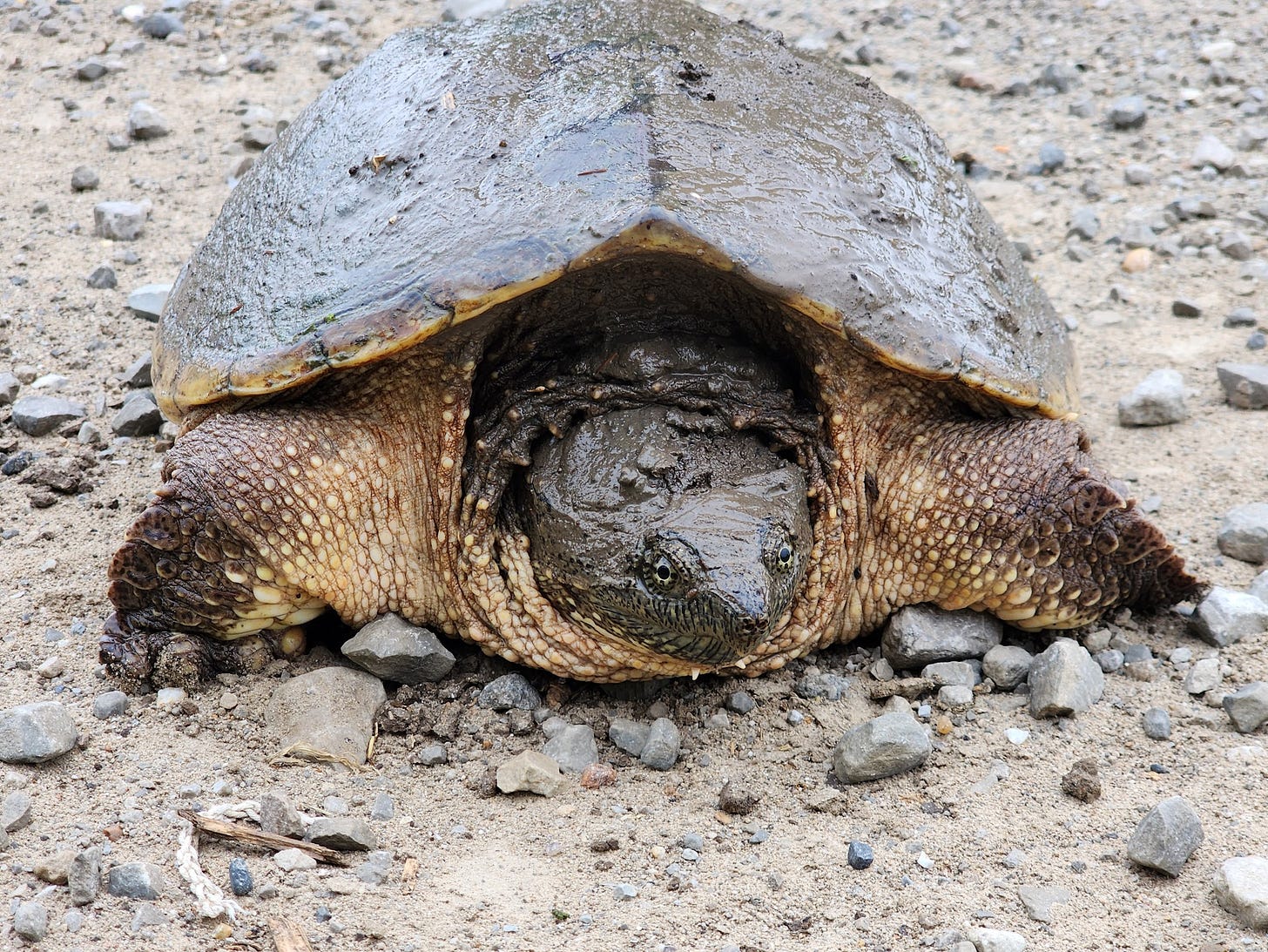
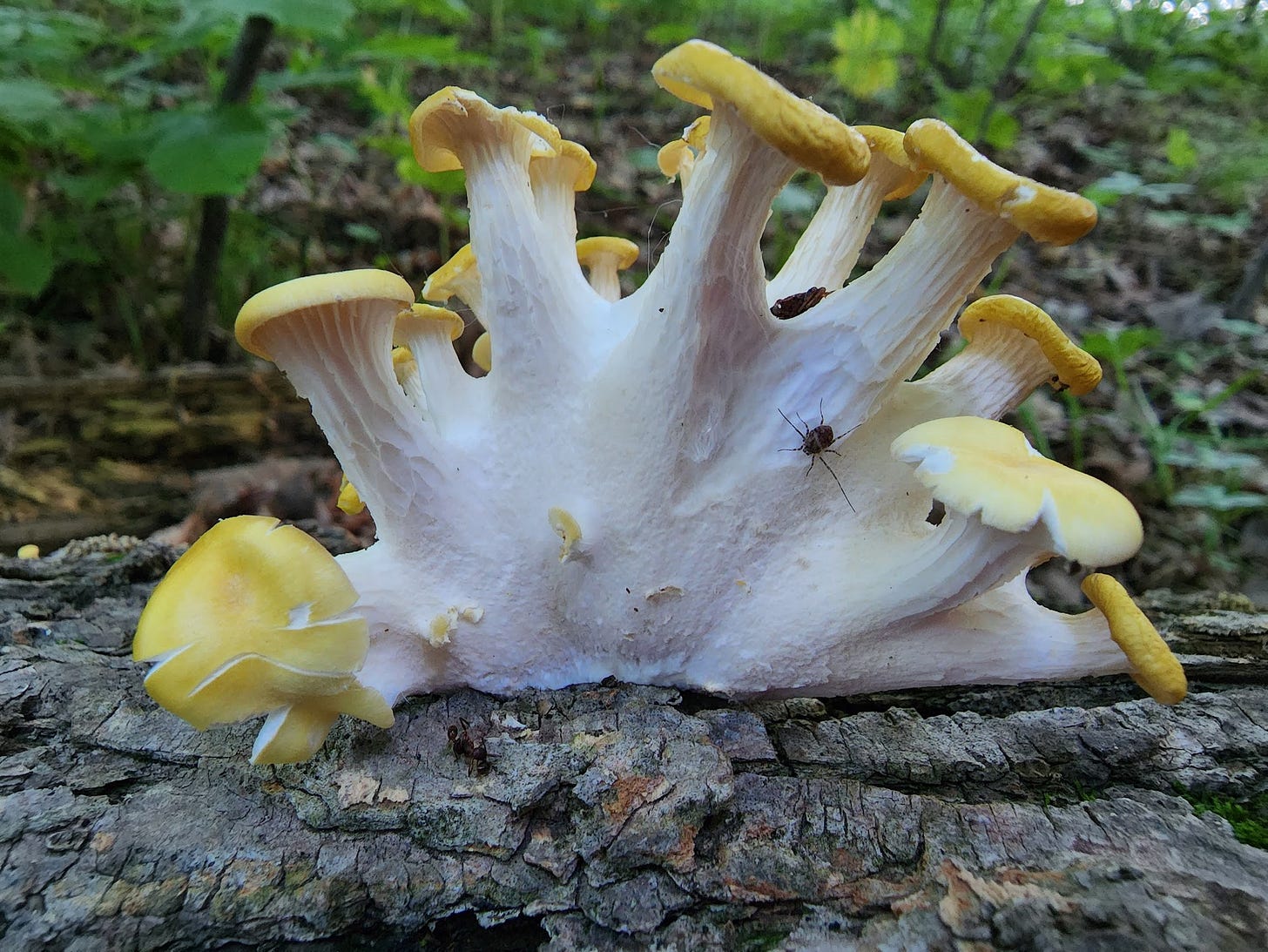
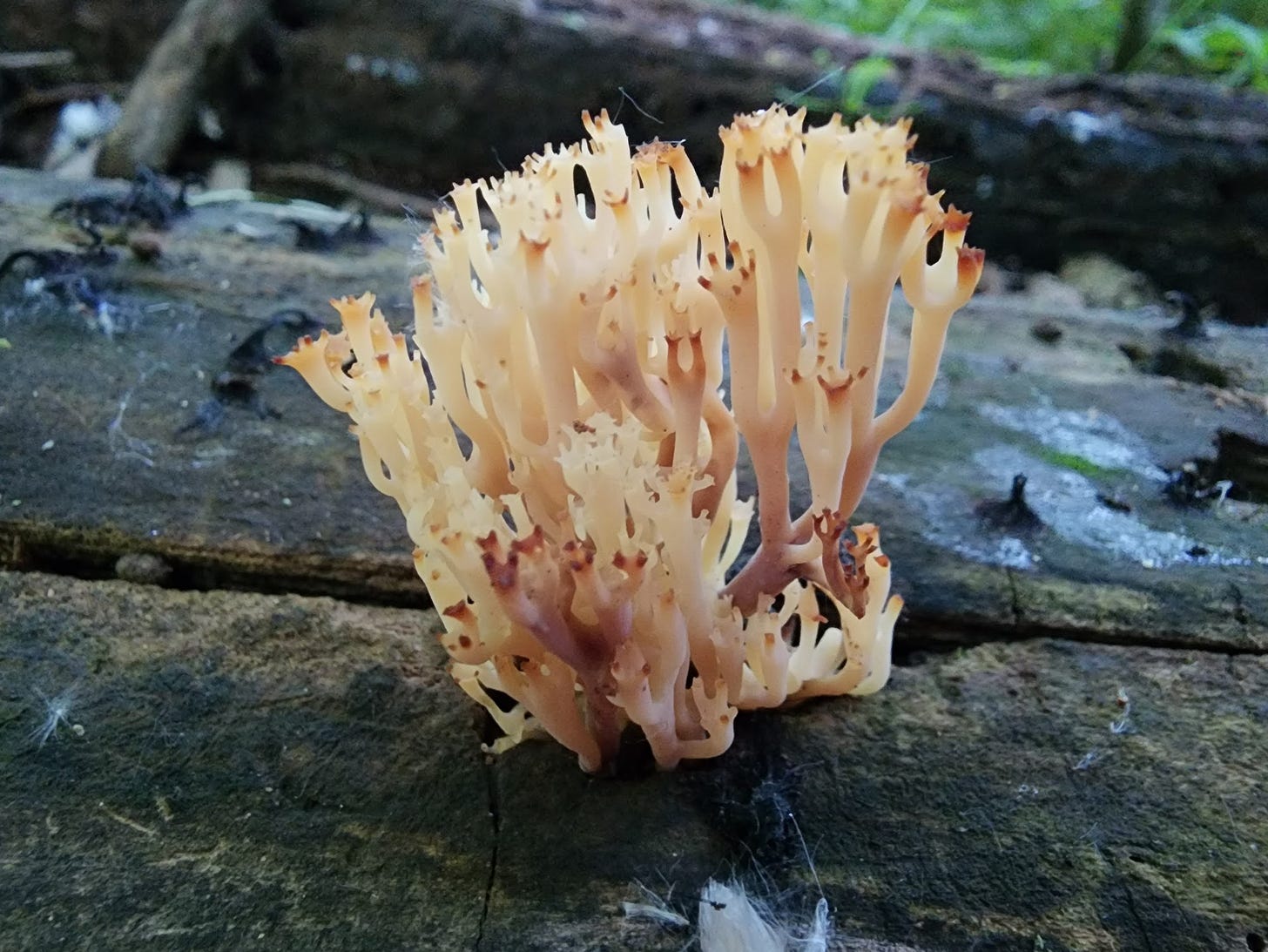
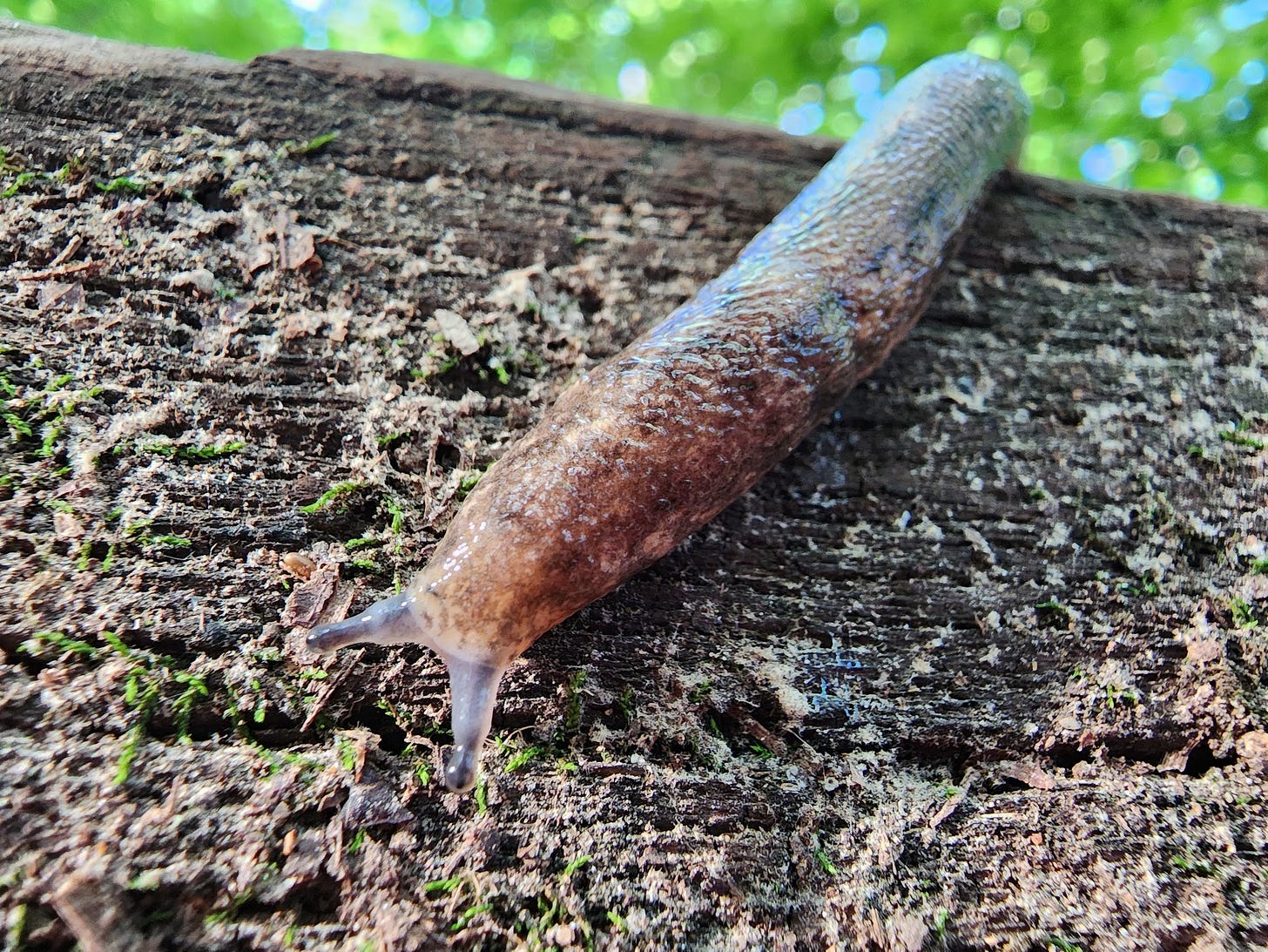
those curated items are always cool, there was a passage or a poem of Wendell Berry's about a boot on a fencepost I am remembering as I read this..